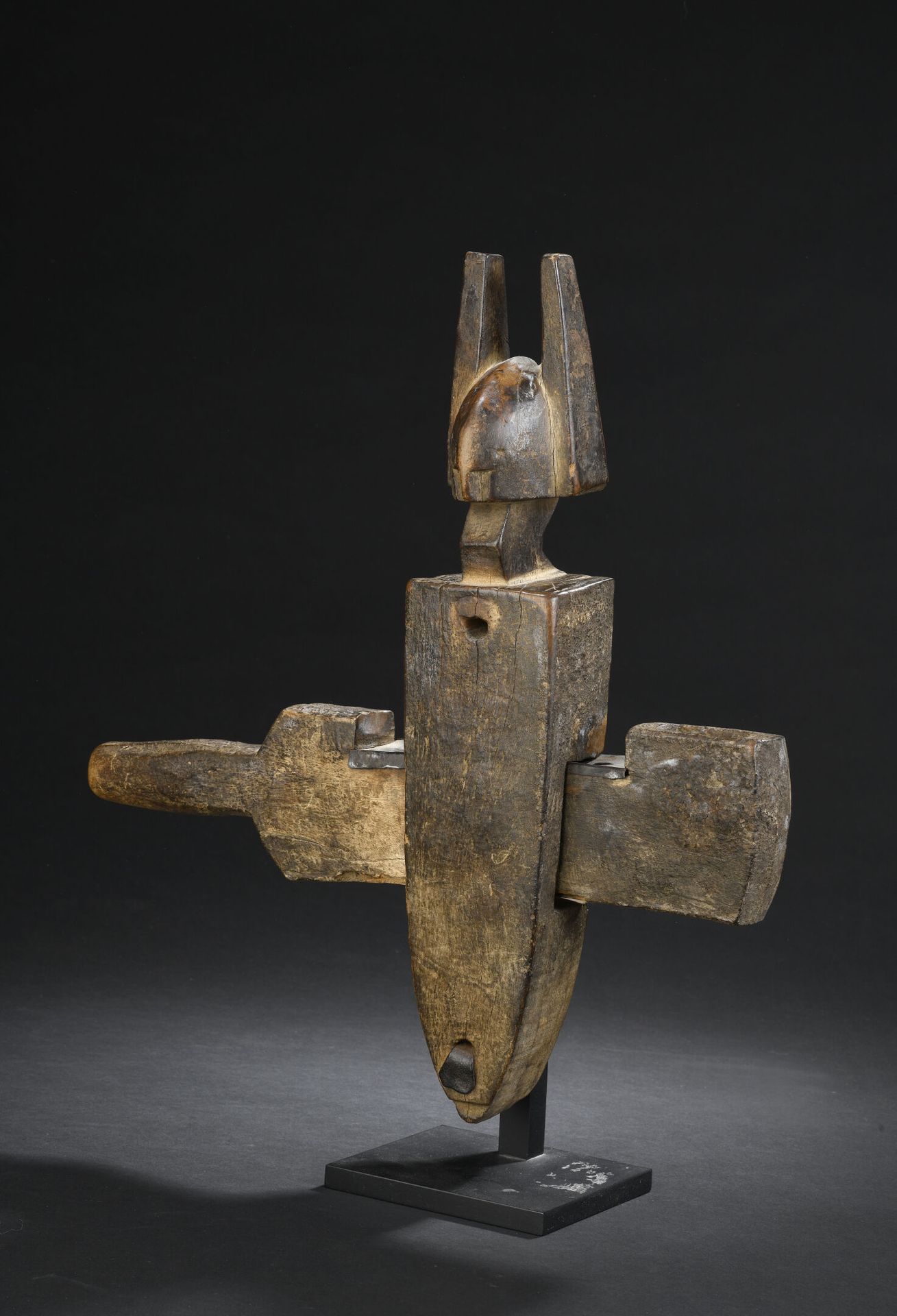Description
Bambara lock, Mali Wood H. 38,5 cm Provenance : Paul and Jacqueline Canfère collection acquired from Jean-Michel Huguenin (according to oral information from descendants). Among the Bambara, there are many terms to designate a lock. The most common is konbarabara which literally means "door protuberance". A lock made up of two parts arranged in a cross, comprising a vertical element, the box, fixed to the door by means of two irons, and a horizontal element, the crosspiece or bolt. Locks were a common object and could also be given to women by their husbands at the birth of their first son. The installation of the lock corresponded, according to tradition, to the accession of the wife to a new social status, that of "adult woman", that is to say, mother of a male child. This was done during the ceremony called senkuturu, where the three stones of the household, symbolizing the three elements (father-mother-child) of the family, were placed in the husband's plot. Other locks are given by the husbands as a sign of affection and esteem, when the young women settle in the husband's village. Stylized face of this beautiful lock with dark brown patina. It emerges from a slightly open U-shaped base decorated laterally with two small horns. The neck is protruding. The chest and the crosspiece have pyrography.
23
Bambara lock, Mali Wood H. 38,5 cm Provenance : Paul and Jacqueline Canfère collection acquired from Jean-Michel Huguenin (according to oral information from descendants). Among the Bambara, there are many terms to designate a lock. The most common is konbarabara which literally means "door protuberance". A lock made up of two parts arranged in a cross, comprising a vertical element, the box, fixed to the door by means of two irons, and a horizontal element, the crosspiece or bolt. Locks were a common object and could also be given to women by their husbands at the birth of their first son. The installation of the lock corresponded, according to tradition, to the accession of the wife to a new social status, that of "adult woman", that is to say, mother of a male child. This was done during the ceremony called senkuturu, where the three stones of the household, symbolizing the three elements (father-mother-child) of the family, were placed in the husband's plot. Other locks are given by the husbands as a sign of affection and esteem, when the young women settle in the husband's village. Stylized face of this beautiful lock with dark brown patina. It emerges from a slightly open U-shaped base decorated laterally with two small horns. The neck is protruding. The chest and the crosspiece have pyrography.
